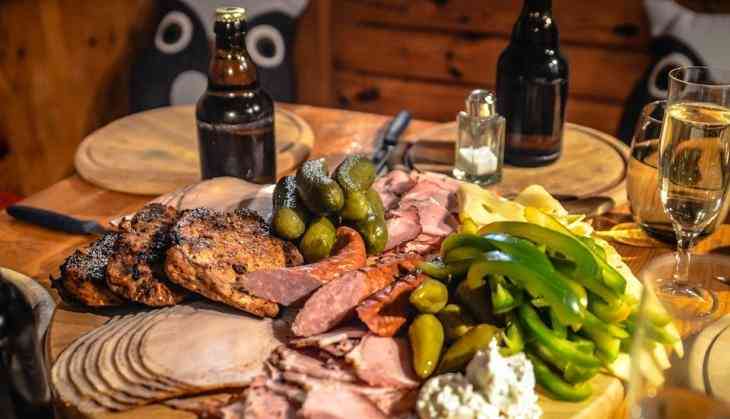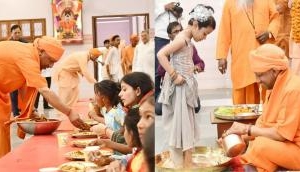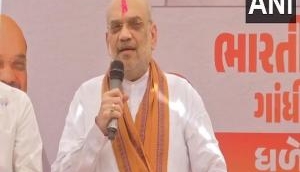The boy who ate everything: Only eating people is wrong

What is the right thing to do? What isn’t the right thing to do? These questions lie at the heart of a branch of philosophy called Ethics. But let me not bore you with sermons from the Gita, or passages from GE Moore’s big yawn, the Principia Ethica (a great favourite of the Bloomsbury set), or even with examples from the more contemporary and eminently readable Peter Singer’s Practical Ethics, and his arguments for vegetarianism and against the organised killing of animals for human consumption.
This is a piece about what we eat. It’s about how I push my own boundaries when I eat. My eating choices—the main course of my essay, which I will spell out and discuss after this starter soup, might offend liberals, bhakts and Muslims alike.
False superiority
Let’s begin with an apparent red herring—drug addiction. Every addict has a sense of superiority. My substance is the best. The pot head thinks that she is superior to the alcoholic, who in turn feels superior to the smack head. The smack head feels superior to everybody else. Then there is the cigarette smoker. If you’ve smoked cigarettes, you know everything there is to know about addiction—the craving, the desire to quit, and how hard it is to do so and sustain it.
But the cigarette smoker often doesn’t think of tobacco as a drug—it’s seemingly non-mind altering, compared to all the others. The tobacco addict looks down on all others, while the others look down on tobacco as the most useless and harmful drug of all. Note, these are all addicts looking down on each other. They are all on one side of the fence but they erect false boundaries of superiority.
The hierarchy of meats
Now, let’s draw an analogy with food taboos. The Hindu who forgoes beef but eats pork, and the Muslim who switches these poles—both feel superior to the other. They are both killers of animals. Somehow, that is never the point of debate. The hypocrisy of addiction is mirrored in the hypocrisy about food taboos.
Swapan Dasgupta, the old right wing mole, whose flippant fluency of prose disguises a consistently fallacious logic, wrote in his TOI column: ‘Beef is not an economic issue; it has come to symbolise cultural offensiveness. Restricting it is not an assault on minority rights — in no religion is beef-eating obligatory — but bowing to common decencies.’
Common decency says I should be able to eat what I want to eat. Common decency also says that someone like me, who eats everything, should then refrain from buying pork salami at my local supermarket because it will offend my Muslim neighbours.
All that common decency really demands, is that I don’t serve beef to someone who doesn’t eat it, at my dinner table. The same applies to pork. One cannot force people to eat what one eats oneself.
Meating in the middle
I am an atheist. I am half-Jain and half-Punjabi. My mother has never cooked non-vegetarian food. She is not particularly religious, but she doesn’t like the idea of consuming dead animals. No restrictions were placed on me by my Jain mother as to what I could eat outside the house, or order into the house.
My maternal grandfather was the one who was more concerned. He lived in the Gujarati suburb of Vile Parle in Bombay. Once, as a child, when I came back after spending an afternoon with my father at the Wayside Inn at Kala Ghoda, he asked me if I’d eaten “non-veg”. I told him the truth—I’d had a chicken and ham sandwich. He seemed mildly upset and after that I usually lied to him about my adventures with non-veg. It was the hypocritically convenient and decent thing to do.
When I’m at home, and because my mother is a consummate vegetarian, I’ve learnt to appreciate the world of greens. It’s a world teeming with variations. If there is no meat in the diet (like at home), one discovers the world of plants. I love eating bushes and berries. Local names differ from region to region, but let me mention some that are common in the UP/ Uttarakhand region.
I can tell the difference between a chichinda and a kundroo, a purple baingan (aubergine) and the sourer green one, and between safedh and kali bhatt ki dal (white and brown soya bean), which one makes with jamboo ka tadka . There is kulath ki dal (a variety of masoor/brown lentil, supposed to be good for kidney stones) and jhingora ki kheer. Pahari palak is different from plains spinach, just like pahari karela (bitter gourd) is different from the plains karela—it’s sweetish and has affable thorns on the outside.
The point of this is: I know my veggies.
All or mutton
Let me come back to cows, buffaloes, goats, chickens and fish—the animals we eat.
Once I decided to be a non-vegetarian—the choice was left up to me by my parents—I became a proper no-holds-barred meat eater. If you have chosen to eat meat, you eat all meat. This gets complicated.
As a student in England, I had my fair share of quarter-pounders with cheese. If you eat hamburgers, you have to eat beef. McAloo tikki ain’t a burger. It’s a bun tikki.
Interestingly, the famous Fillet-O-Fish burger was invented in the early 1960s, by a McDonald’s franchise owner who had a store in Cincinatti, Ohio. The store was in a Roman Catholic neighbourhood, where the predominantly white Catholic customers engaged in the practice of not eating meat on Fridays, much like meat-eating Hindus don’t eat meat on Tuesdays.
According to the Smithsonian.com, even now, 23% of the sales of Fillet-o-Fish happen during Lent, a six-week observance in the Christian liturgical calendar that begins on Ash Wednesday and ends just before Easter Sunday. Think of it as a Christian Navratra.
I understand the division between meat eaters and vegetarians, but the ones that meat eaters come up with, within their tribe, have always confounded me. What makes one think that fish is not meat? What fuels the moral righteousness of fishetarians? Is it because, as Kurt Cobain sang with some irony on the album Nevermind: ‘It’s ok to eat fish, 'cause they don’t have any feelings.’
The fish example opens an edible can of worms. Let’s forget about Hindus, Jews, Muslims and Christians for a moment. Even secular non-believers, who flaunt their beef-eating prowess by biting into over-priced south Delhi burgers, surreptitiously delivered to your doorstep in the dead of night, will baulk at the thought of eating anything other than beef, chicken or pork.
I went to the Ziro Music Festival in Arunachal Pradesh. There was cat, dog and rat meat on offer at the festival site. I sampled it all. This is a tricky thing to mention. There are those from Arunachal who feel that this shouldn’t be mentioned. It feeds into a cliché about the North East. But I’m not mentioning it for those reasons. I’m a stereo-type buster if there ever was one. One cannot deny that the meat was freely available. The rats are a delicacy. Special traps are laid in the jungle to catch them; they are laid out in the veggie shops, along with the long gourds.
A photographer friend approached me at Ziro and said in a whisper: ‘Should we try some dog?’ It was like we were buying drugs. Remember the drug analogy at the beginning of this piece? How one addict feels superior to another? When I came back to Delhi and talked about it, old friends stopped speaking to me. Happy chicken and buffalo-eating friends wouldn’t answer my calls. After reading this piece, other woof and meow addicts might be filled with disgust.
But here’s my argument: I didn’t go out of my way to eat that meat. As a non-vegetarian I will eat anything that my fellow human beings eat. I will not judge their practices. What does it taste like? All barbecued meat tastes the same.
I’m more on the page with Andrew Zimmern who has travelled the world eating bugs, ants and what not on his unappetising yet addictive show called Bizarre Foods, which debuted a decade ago on the Travel and Living Channel.
Curiosity killed the cat
Once you have chosen to eat life, you can eat all life. To then choose between one animal and another smacks of the kind of hypocrisy that drug addicts reserve for each other. I smoke only Classic Milds, you smoke Drugs.
The French famously eat horse; other horse-eating countries include: Mexico, Belgium, Canada, Chile, Spain, Iceland, Russia and Kazakhstan. The English always looked down on the French for doing this, and it must be pointed out that horse consumption in France has fallen steadily since the 1980s.
For me, once you have chosen to eat living beings, you have crossed the Rubicon. All animals are equally lovable and, may I add, edible. The piglet, calf, puppy and kitten are all God’s creatures.
Cruelty is unappetising
I’m no heartless brute. I’m curious. The only thing that can make me stop eating meat is a passage like this one, from Eric Schlosser’s 2001 book Fast Food Nation: What the All-American Meal Is Doing to the World. In the section I quote below, Schlosser gives us a nightmarish glimpse of a slaughterhouse:
“Now the cattle suspended above me look just like the cattle I’ve seen on ranches for years, but these ones are upside down swinging on hooks. For a moment, the sight seems unreal; there are so many of them, a herd of them, lifeless. And then I see a few hind legs kicking, a final reflex action, and the reality comes hard and clear.
For eight and a half hours, a worker called a ‘sticker’ does nothing but stand in a river of blood, being drenched in blood, slitting the neck of a steer every ten seconds or so, severing it’s carotid artery. He uses a long knife and must hit exactly the right spot to kill the animal humanely. He hits that spot again and again...
I watch the knocker knock cattle for a couple of minutes. The animals are powerful and imposing one moment and then gone in an instant, suspended from a rail, ready for carving. A steer slips from its chain, falls to the ground, and gets its head caught in one end of the conveyor belt. The production line stops as workers struggle to free the steer, stunned but alive, from the machinery. I’ve seen enough.” (Emphasis mine).
The hypocrisy of hierarchy
From a humane point of view, killing all animals is wrong. The practising Hindu saying: But how can you kill the gentle cow?, is not that different from the cat-lover who says: Only monsters kill cats.
Jainism, for example, doesn’t hierarchise life, with the camel at the top and the ant at the bottom. One doesn’t need religion to practice ethical living. With liberals, I often encounter logical inconsistencies, where beef is celebrated, but you mention eating other animals and you are accused of lacking in compassion, while the natives who eat these so-called taboo animals are dismissed as backward tribals. You cannot have your cow and eat it too.
Soon will come a day, when we will be able to eat a hamburger, which has a beef patty, made from meat grown in a test tube. This will also be good for the environment, for, contrary to what Hindutva’s goal-post changing ‘scientists’ claim, the cow doesn’t emit oxygen but methane.
Till that happens, I will continue to occasionally eat meat of all kinds. One of Malcom Bradbury’s campus novels bears the title: ‘Eating People is Wrong.’ Perhaps, that’s the only line I’ll draw as long as I’m a non-vegetarian.
But then, have you read Piers Paul Read’s Alive? Or seen the film based on true events? A plane carrying rugby players crashes into the snow-clad Andes. As they start to die in extremely inhospitable conditions, the rest of the survivors, to survive, are forced to do the unthinkable: resort to cannibalism.
Eating people is wrong, but beware, in an extraordinary situation, I might eat you too.
(The writer is a social commentator and the author of Eunuch Park & The Butterfly Generation)





_251049_300x172.jpg)
![BJP's Kapil Mishra recreates Shankar Mahadevan’s ‘Breathless’ song to highlight Delhi pollution [WATCH] BJP's Kapil Mishra recreates Shankar Mahadevan’s ‘Breathless’ song to highlight Delhi pollution [WATCH]](http://images.catchnews.com/upload/2022/11/03/kapil-mishra_240884_300x172.png)

![Anupam Kher shares pictures of his toned body on 67th birthday [MUST SEE] Anupam Kher shares pictures of his toned body on 67th birthday [MUST SEE]](http://images.catchnews.com/upload/2022/03/07/Anupam_kher_231145_300x172.jpg)






